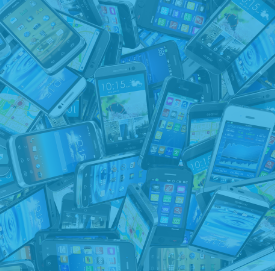BLOG

Design Thinking Phase One: Empathize
If you want to find a solution, you not only have to know the problem, but you need to understand why it is a problem in the first place. In the first phase of the process of Design Thinking, your team will gain an empathetic understanding of the problem you are tasked to solve. How? Simple: you observe and engage the users experiencing the application and, maybe, ask them how they are using the application.
All problems can be deceiving to the business teams. For instance, if an unexpectedly low number of users are finishing the sales funnel, why is that? Well, it could be the call-to-action too far down the page, a page could be broken and not transitioning them further down the funnel, the content could make it unclear or overwhelming, or the price of the product could be all wrong for the demographic. I’ve just listed 4 possible reasons for a metric that is off the goal. But we both know there could be so many more depending on the page, the app, the process, the users, and the brand.
If the business and development teams decide on a solution without first understanding the core reason for the problem, the wrong solution could be implemented. That’s why the first step is to empathize with the user.
What are the risks in phase one of design thinking?
This phase is going to set the whole process on a path to success. But there are a few risks to be aware of that could limit the team’s ability to fully empathize with the user.
Time constraints
If this problem is prohibiting users from making purchases or completing important tasks for the applications, it’s most likely the top priority (or only priority) of the team at that time. Needing to find a solution fast doesn’t mean that you should flow through every step of the design thinking process, but it does mean you may need to timebox each phase to get to a release faster. With that, the team may feel they have the time to truly understand the users’ problems. Advocate for the research and empathize phase of the process - it could make the difference between “release and fix” and “release and rework.”
Wrong research pool
You can use analytics tools to understand if the problem your users are experiencing is spread through all demographics or specific to one or more user groups. If the problem is isolated to one user group, you need to make sure you’re isolating the observations and engagements to that group as well. Adding users who aren’t experiencing the problem into your research pool could skew the empathetic decision-making.
Skipping this phase entirely
It’s easy to assume that you and your team (or the business teams) understand the problem. It’s even easier to do this when you have a time constraint. It’s important that the team gets as much information about the issue as possible before moving on to the next phase. It’s like throwing spaghetti at the wall and hoping it sticks.
3 Ways to Complete Phase One of Design Thinking Quickly and Efficiently
Use Third-Party Tools.
If your application has a third-party tool that tracks the users (like Hotjar or Logrocket), you’ll be able to quickly review the user experience without reaching out to users every time there’s a concern. These tools usually do require a subscription fee but are extremely useful to brands with complex websites and mobile applications. It can really speed up the process of discovering and fixing bugs or breaks in a user funnel.
Create a Regular User Feedback Loop
Getting user feedback is crucial for application development, especially in agile development. If your company doesn’t already have a way to regularly recruit and solicit user feedback, get one. The best way is either small group or one-on-one interviews where you can take notes, see how users actually engage with the application, and record for constant review.
However, qualitative feedback is extremely useful as well. Ask your users to provide feedback and follow up with what they suggest to improve the experience. Create an automated campaign around this, and you’ll have a steady stream of feedback to review when your application has an issue.
Offer Current Users Incentive for Feedback
Have an issue that’s not popping up on your regular feedback or focus groups? Offer monetary incentives to your users. If your industry or brand can support it, try giving a discount on the next purchase or subscription. If you can’t, simply offer gift cards or even “a coffee on us” for your users’ time. You can try to ask for feedback without an incentive, but in our experience - it never leads to QUICK responses.
Empathize Phase: The Foundation of the Design Thinking Process
Like we said before, the Empathize Phase is imperative to finding a successful solution to the problem. The rest of the design process hinges on the fact that there is a full understanding of the user, their experience, and why they are using the application.
YOU MAY ALSO LIKE

February 9, 2022 - Jon A.
Agile Ceremonies in Software Development at Entrision

January 11, 2022 - Derek H.
Mobile App Development Trends for 2022


